The Privateer 161 Is a Big Bang for Your Buck Enduro Race Bike

“Hearst Magazines and Verizon Media may earn commission or revenue on some items through the links below.”
Takeaway: The Privateer 161 is the enduro embodiment of the “don’t race what you can’t replace” philosophy. With an aluminum frame, progressive geometry that prioritizes stability at speed, and high quality suspension parts, the 161 hits all the right notes for the rider seeking an enduro race bike, yet still having some money left over for entry fees.
The slack head tube angle combined with a long reach and long wheelbase make for excellent downhill performance.
80º (effective) seat tube angle keeps you positioned optimally on the climbs.
RockShox Lyrik Ultimate, 170mm travel up (front) and RockShox SuperDeluxe Ultimate 161 mm travel (rear).
Shimano SLX/XT drivetrain with Magura MT5 brakes.
Aluminum frame with (mostly) external cable routing for easy servicing.
Price: $3,950 as tested
Weight:35 lbs (no pedals, size P3)
Privateer 161 Build Details
Style: Enduro race bike
Material: 6066-T6 Aluminium 161mm of travel
Wheel Size: 29" (Size P2, P3, P4) 27.5" (Size P1)
Fork: Rockshox Lyrik Ultimate 170mm. RC2 42mm offset
Drivetrain: Shimano XT / SLX 12-speed
Cranks: Shimano SLX M7100 170mm, 32 toot
Rear Cassette: Shimano SLX M7100 10-51 12-speed
Brakes: Magura MT5 203mm rotor front / 180mm rotor rear
Wheels: HUNT Enduro Wide (33mm internal width)6069-T6 Rim w/PSR triple-butted spokes.
Tires: Schwalbe Hans Damf 2.4 rear and Magic Mary 2.4 front
Saddle: Fabric Scoop Elite Radius B
Seatpost: OneUp V2 Dropper, 180mm drop
Handlebar: RaceFace Atlas 820mm wide 20mm rise 35mm clamp diameter
Stem: Race Face Aeffect R, 40mm length, 35mm clamp diameter
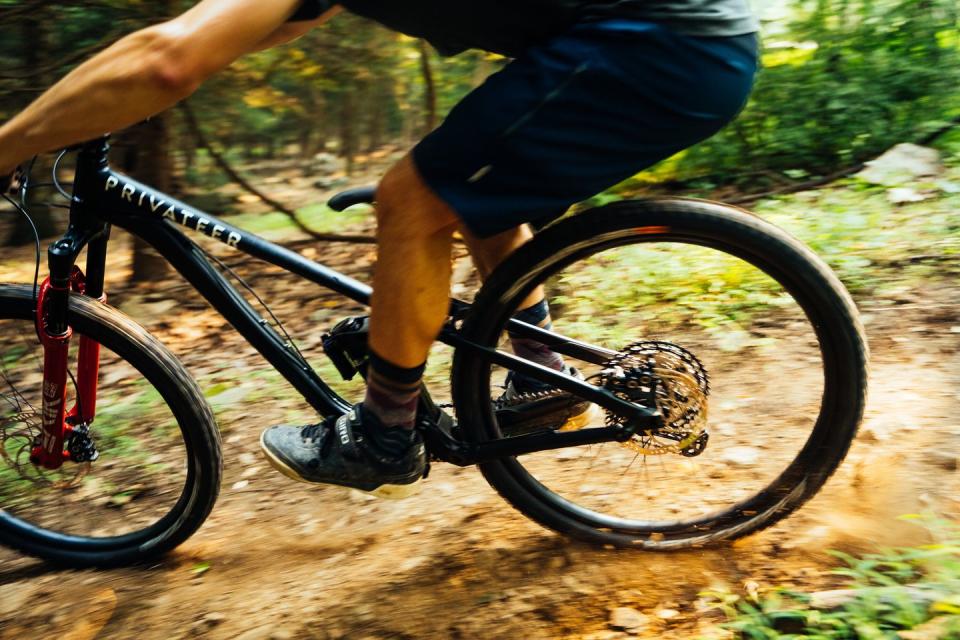
The term ‘privateer’ often refers to a rider who is self-supported, or without a team helping to pay their way. Bike racing can be expensive, especially in an equipment-heavy discipline such as enduro racing. Because of the cost, a privateer often needs to maximize performance per dollar, and this is precisely the kind of focus that the 161 brings to the market.
Privateer bikes are part of ‘The Rider Firm’ which includes brands such as Hunt Wheels, Cairn E-Bikes, and Dissent 133 apparel. The focus of the Privateer brand is to bring a bike with “progressive race-ready geometry” and “rider-focused features” in a package that will handle multiple seasons of abuse and meet the needs of a privateer racer.
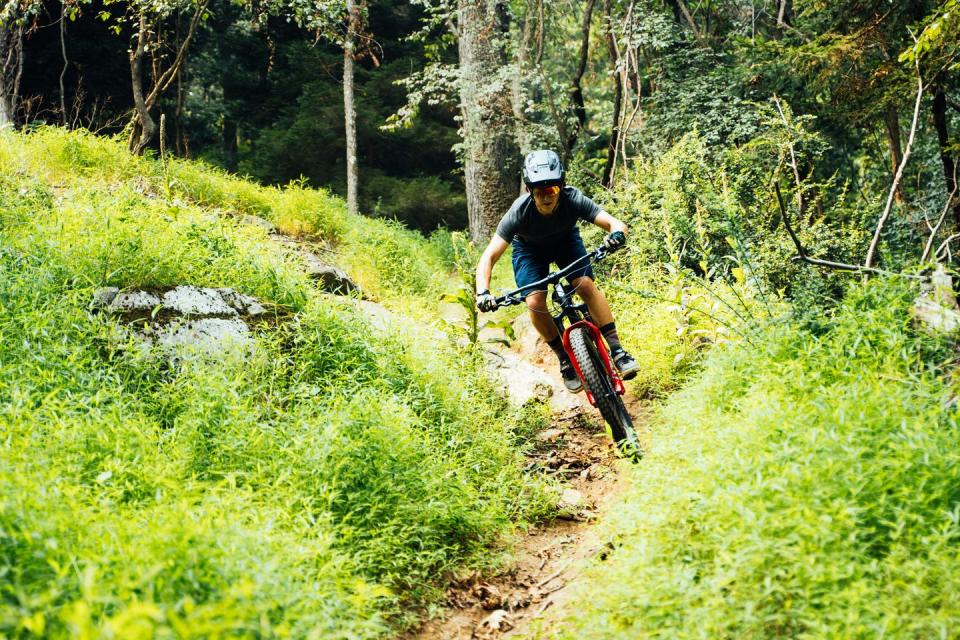
The heart of the Privateer 161 is a beefy, 6066-T6 aluminum frame. Privateer used off-the-shelf tubing—rather than design something proprietary in-house—to keep costs low, but they did design their own rocker link and bottom bracket junction. The dropper post cable is internally routed and, while the shift housing runs through the chainstay, the rear brake hose and (most of) the rear derailleur shift housing is located externally on the frame. This is a huge help if you’re working on your own bike, or want to remain friends with your local bike shop mechanic. Keeping with the mechanic-friendly theme, the bottom bracket is threaded and includes a set of ISCG-05 tabs for running a chain guide or bash guard.
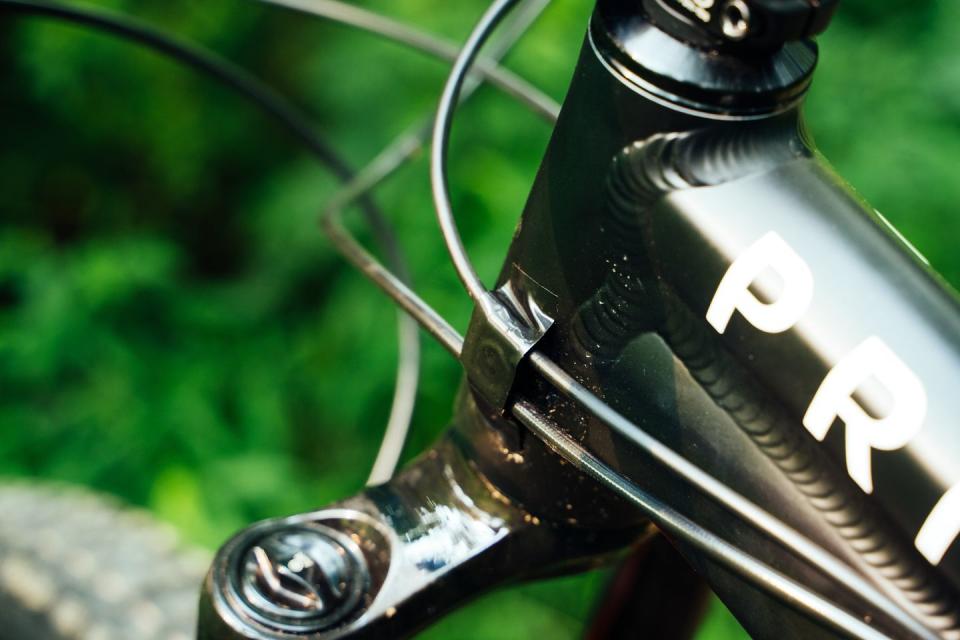
Enduro racing is predominantly a downhill affair. Riders get their fair share of pedaling in a stage to test their fitness and bike pedaling efficiency, but the race is won and lost on the steep downhill bits of track. The Privateer is made with downhill speed and stability as the primary focus. The 170mm fork, paired with a slack 64-degree headtube angle and a long 490mm reach measurement, ensures that when you let off the brakes, the 161 will be in its element.
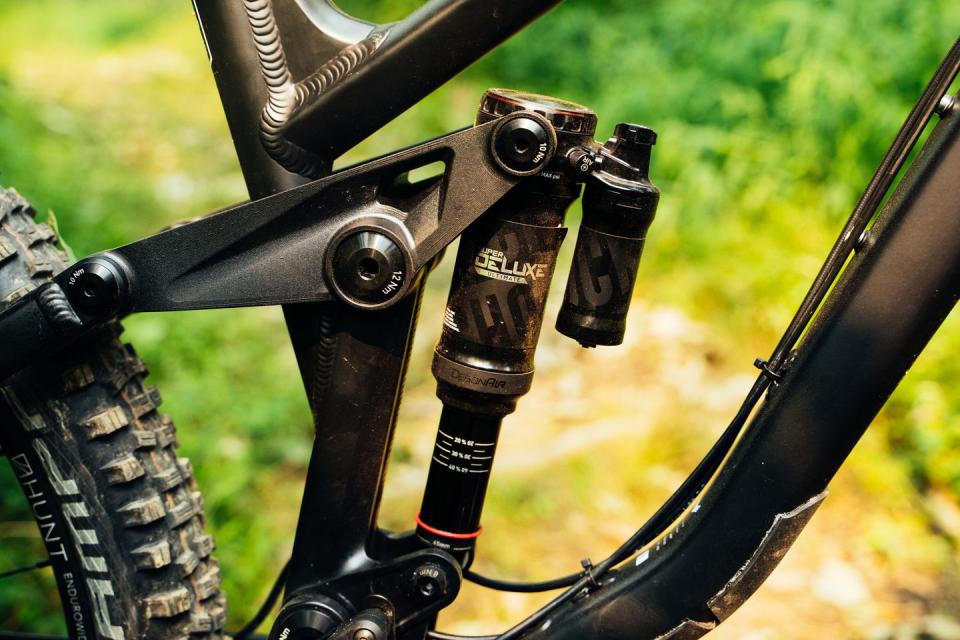
Geometry & Sizing
If you haven’t been keeping up with your modern mountain bike geometry trends, then a profile view of the Privateer 161 might almost look comical to you at first glance. It is impossible to miss the wild contrast between the slack head tube angle (64-degrees) and the absurdly steep (80-degree effective) seat tube angle.
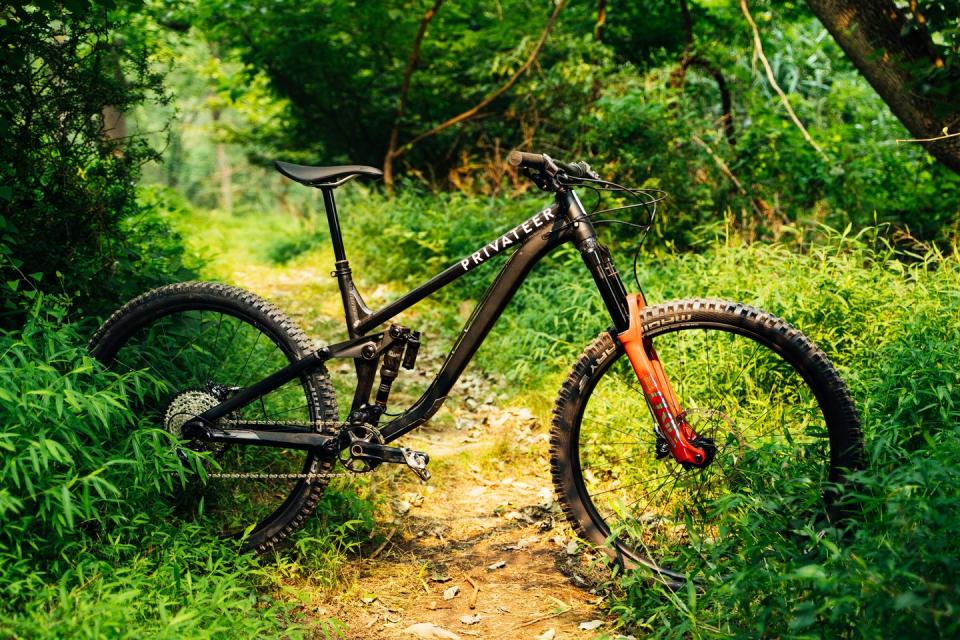
The 161 pushes the limits quite a bit compared to some popular enduro bikes—such as the Trek Slash, Specialized Enduro, and the Santa Cruz Nomad. All these bikes share the same 64-degree head tube angle as the 161. Where the Privateer 161 diverges from the norm is in its reach: it is the longest bike in the bunch (with a reach of 490mm) and has the steepest seat tube angle. The 161 is a full 2-degrees steeper than the Nomad and almost 5-degrees steeper than the Trek Slash. This creates a compact seated position, even with the long reach number.
Generally speaking, that means that if you ride a large in other mountain bikes, a large (or P3) size 161 should work well for you.
Builds & Pricing
Privateer currently offers two complete versions of the Privateer 161. Both builds are similarly priced; it just depends on if you prefer SRAM or Shimano parts. The SLX-XT build comes in at $3,950 and is the bike we tested. If you prefer a SRAM drivetrain, you can get a GX build for $4,380.

For riders looking to swap parts to a new frame, or start a build entirely from scratch, a frameset (with RockShox Super Deluxe Ultimate rear shock) is available for $1,760.
Ride Impressions
The Privateer 161 was designed with enduro racing in mind, and that is obvious from the second you lay eyes on the bike. But, what set the 161 apart for me was just how well it climbed relative to other enduro bikes I have ridden. The Horst-link suspension design nearly eliminates pedal bob, while the steep seat tube angle positions the rider in an efficient position for pedaling in the saddle. But don’t run to sell your cross-country bike just yet, as the 161 is still a 35-pound bike. The 161 climbed well (for a 35-pound enduro bike), helping me get to the good part, the descents, with a bit more gas in the tank, but uphill performance is not where a bike like this shines.

Once pointed downhill, the 64º head tube angle, combined with a 170mm travel fork, made the 161’s front end ride almost like a downhill rig. The combination of progressive geometry and solid suspension gave the Privateer a feeling of bottomless travel and reliable stability through rougher sections of trail. The 161 liked to track straight and was unphased by obstacles in its way, especially at higher speeds.
Although the 161 eats chunky tech for breakfast (in a straight line), I did find the bike a bit slow to turn when cornering. Throwing the 161 around a tight switchback requires a bit of concentration and upper body strength. A quick look at the wheelbase measurement for the 161 helps explain this a bit. The 161 has one of the longer wheelbases I’ve seen on an enduro bike, at 1279mm for the P3 size. Combined with the slack head angle, the long-wheelbase makes for a bike that is fantastic at holding straight-line speed. However, these same geometry features work against the rider when hitting a tighter section of trail.
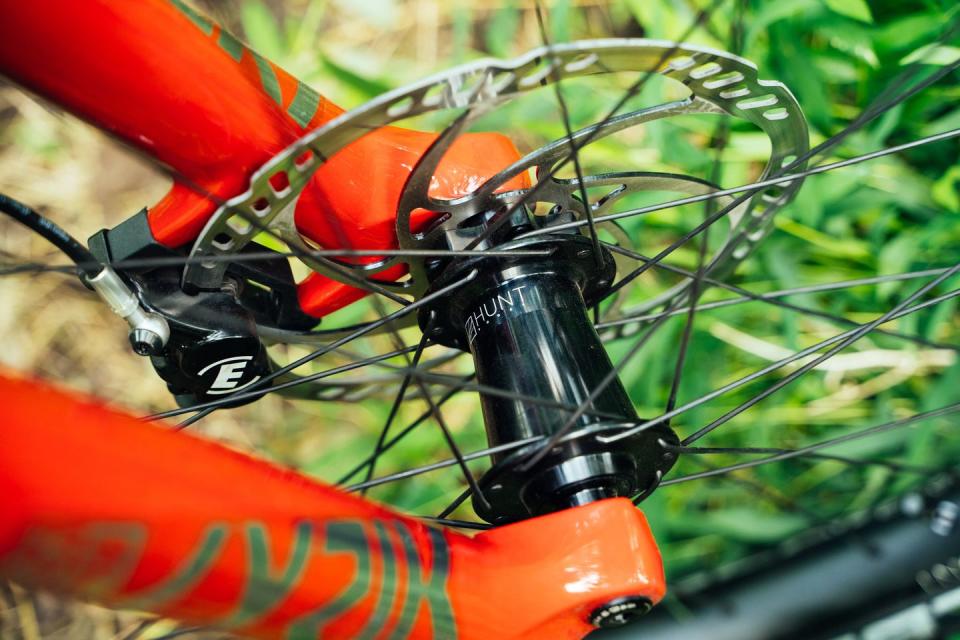
The RockShox Super Deluxe components on the 161 pair well with the bike’s suspension system. As expected, it took a bit of adjustment to get everything tuned the way I like. The Lyric Ultimate features rebound, low-speed compression, and high-speed compression adjustment, while the Super Deluxe Ultimate is a bit more simple with only low-speed compression and rebound adjustments. After I inflated the suspension to the proper air pressures based on my weight, I had to play quite a bit with the compression and rebound on both the fork and the shock. Large adjustment dials on the top of the Super Deluxe’s air can make it particularly easy to make small adjustments and it only took me a few laps of my local riding spot to get things working the way I liked.
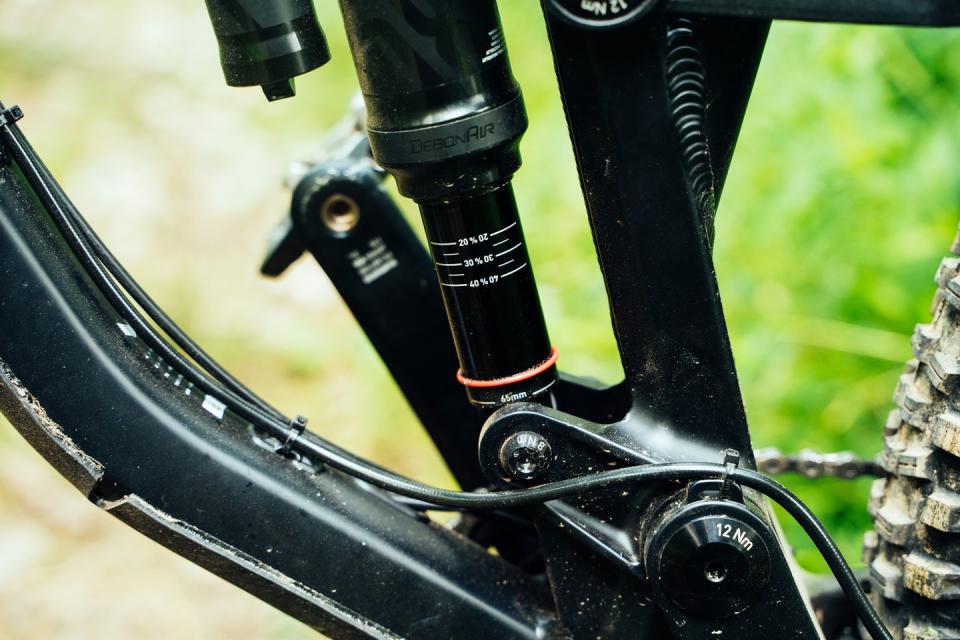
Once tuned to my liking, the Lyric Ultimate was endlessly supportive and didn't dive through travel or pack into the lowers after repeated hits. Similarly, the Super Deluxe Ultimate kept the back end of the bike feeling responsive and inspired confidence, with just enough feedback on what my rear wheel was doing.
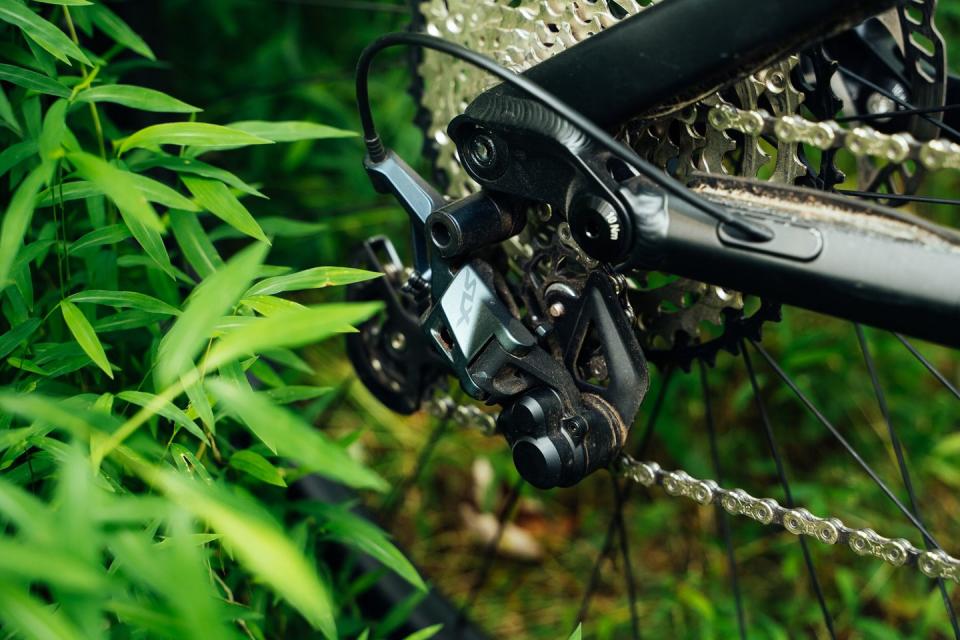
The drivetrain on our test bike was primarily a Shimano SLX affair, with an XT shifter to spruce things up a bit. Once set up, the shifting was reliable and precise. Shifting under load can test any drivetrain, but even pushing all your power through the pedals, the drivetrain shifted smoothly. Shifter feel on SLX is characteristically Shimano, with dampened trigger feel and quieter shifts as compared to SRAM GX.
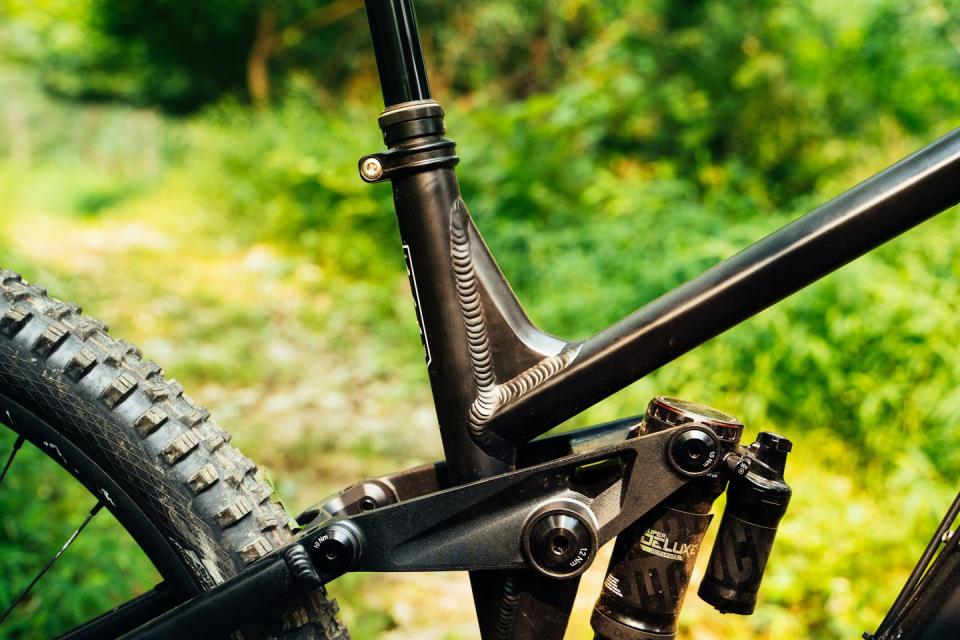
When looking towards touch points on the 161 I really appreciated the long-travel dropper post. The One Up, with 180mm of travel, is very important on a bike with such a steep seat tube angle for getting the saddle out of the way. The reliability of the OneUp was excellent over the course of the test. I didn't have to change the cable tension at all, and it stayed silent and ready to go during every ride. The post did arrive with a tiny bit of rotational play in it, but it was so minuscule that I never noticed it while riding and only noticed it when checking for play while writing this review.
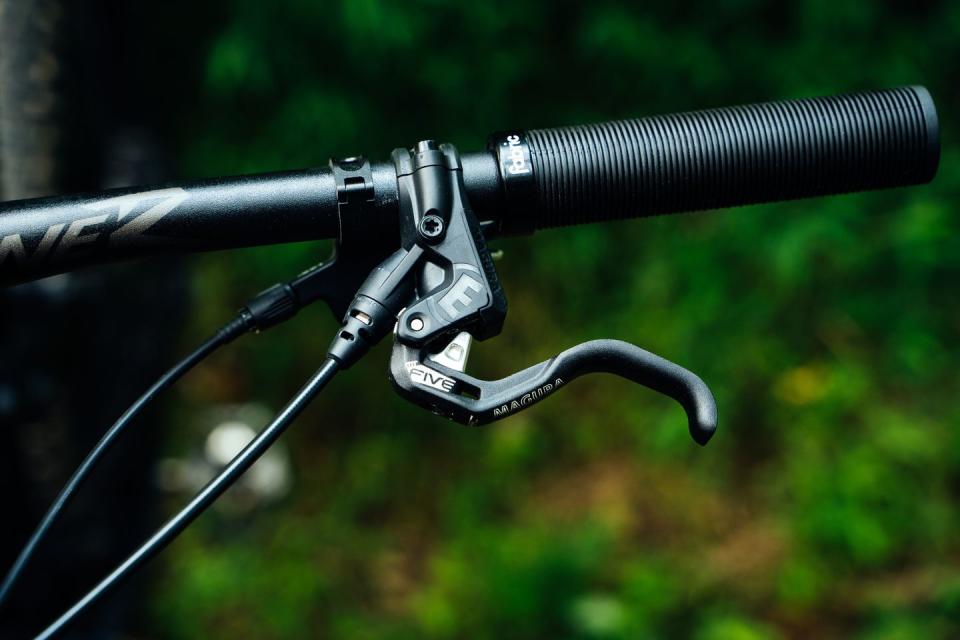
Unfortunately, the Magura MT5 brakes were a bit of a disappointment. Stopping power was decent, but I missed the tool-less adjustability of the Sram Guide brakes available at similar prices. It’s really important to have brake levers in a spot that feels good when you’re starting a run and it’s really frustrating having to fish for a 3mm hex key to make adjustments I can do while riding with other brakes.
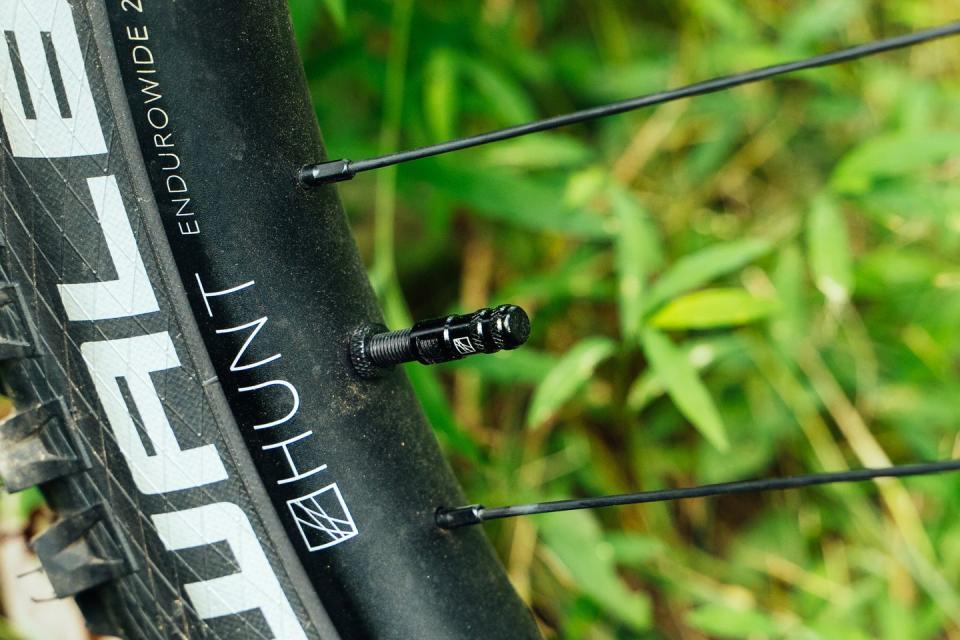
The Hunt Enduro wheels, which are alloy tubeless rims with a 33mm internal width, are an easy-to-service build using J-bend spokes and external nipples. After several days of bike park riding, we put the serviceability factor into use as both wheels needed to be tensioned and trued. It’s worth noting that this wheels costs only $600 new, which is a relative bargain for an aluminum, tubeless, boost, and wide-internal-width mountain bike wheelset.
While aluminum is not the most exciting frame material, it gets the job done, balancing performance per dollar and alleviating the need to fret over every rock that hits the downtube. Privateer still managed to pack in some innovative technology, such as a three-bearing main suspension pivot— using two bearings on the drive side to help better distribute the load— due to the drive-side pivot being offset inboard for chainring clearance. In theory, this design should help to stiffen up the linkage and increase bearing life.
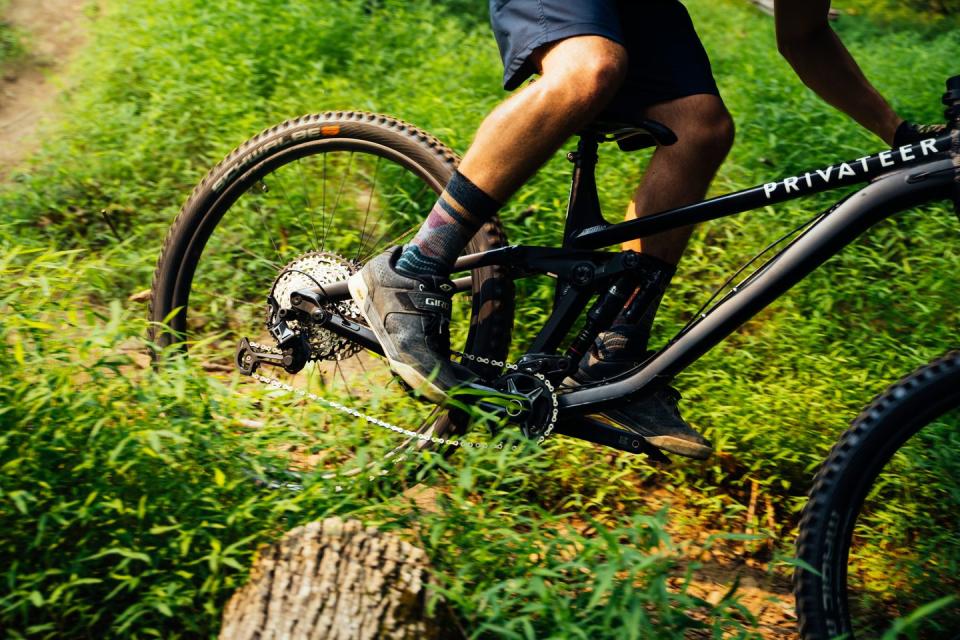
After spending several weeks on the Privateer 161, riding it everywhere from a local bike park to lots of chunky, backwoods trails, I found the 161 best suited for faster, wide-open tracks. That is to say; it rewards riders who seek out trails with room to straighten it out and lay off the brakes. On tighter, more technical sections, and at lower speeds, the 161 had me struggling a little bit. In general, the steeper and faster the trail, the better the 161 handled. The 161 will excel as a burly bike park bike and a purpose-built enduro race rig; but it’s not a do-it-all trail bike.
You Might Also Like
